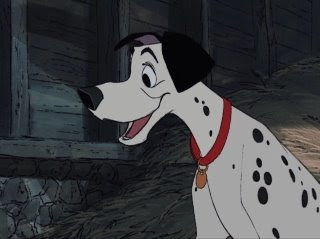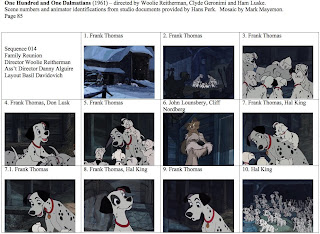101 Dalmatians: Part 16A

In this section, the pups and their parents spend some quiet time together before Horace and Jasper arrive to resume the chase. The Colonel, Captain and Sgt. Tibbs delay the Baduns, but are not capable of stopping them. As Peter Emslie points out in the comments to Part 16 , the delaying action gives the Colonel his brief moment in the sun. He finally gets to take action. It's an important moment because it shows that Tibbs and the Captain respect the Colonel for valid reasons and they're not simply indulging him. The story forces limitations on how successful the three can be, though, so as not to distract from the main characters. This is a sequence which is pretty much cast by animator. Frank Thomas has a major hand in animating the dogs, especially the adults. Blaine Gibson contributes some animation to Pongo and Perdita. Hal King takes care of the personality close-ups of the puppies while Ted Berman gets the their long shots. John Lounsbery animates the Colonel in...


